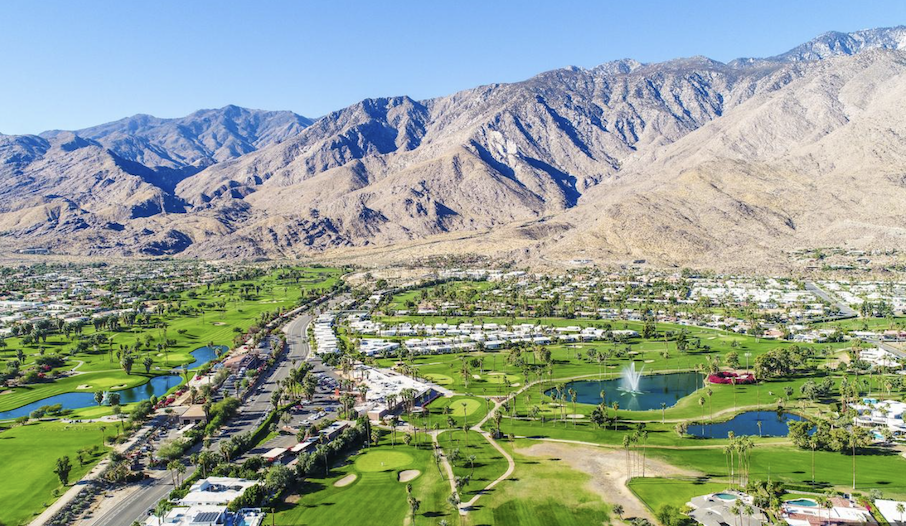
The sight of golf courses and pools in and around Palm Springs, CA is a stark contrast to the desert of the Coachella Valley. As recently as the 1600s, this valley was a lake, and today there is a large aquifer that continues to supply the bulk of water needs in the area. It was in this desert oasis environment that the Hollywood set came to create a winter playground. They were drawn by the clear skies, the mountains that created a sense of separation from the rest of the world, and the pleasures that came with a reliable water srouce. While developing the area, they sought to balance their indulgences with respect for the natural landscape.
International Style (modernist) architects had already started to make their mark in Los Angeles, and when Palm Springs began to be developed as a vacation home market in the 1950’s, this is the style that seemed to best express the optimism of the post war period and whose forms best suited the indoor/ outdoor lifestyle that the desert climate so readily provided. Walls of glass and rooflines that extended to create shade became the defining features of what we associate with Mid-century modernism. The style didn’t rely on historic expectations of what a house should look like, but instead embraced optimism for the future.
On a recent trip to Palm Springs, I joined a tour of mid-century homes, and learned much about the development of this unique juxtaposition of nature and culture. (An interesting side note- unlike most of California, palm trees are actually native to Palm Springs.)

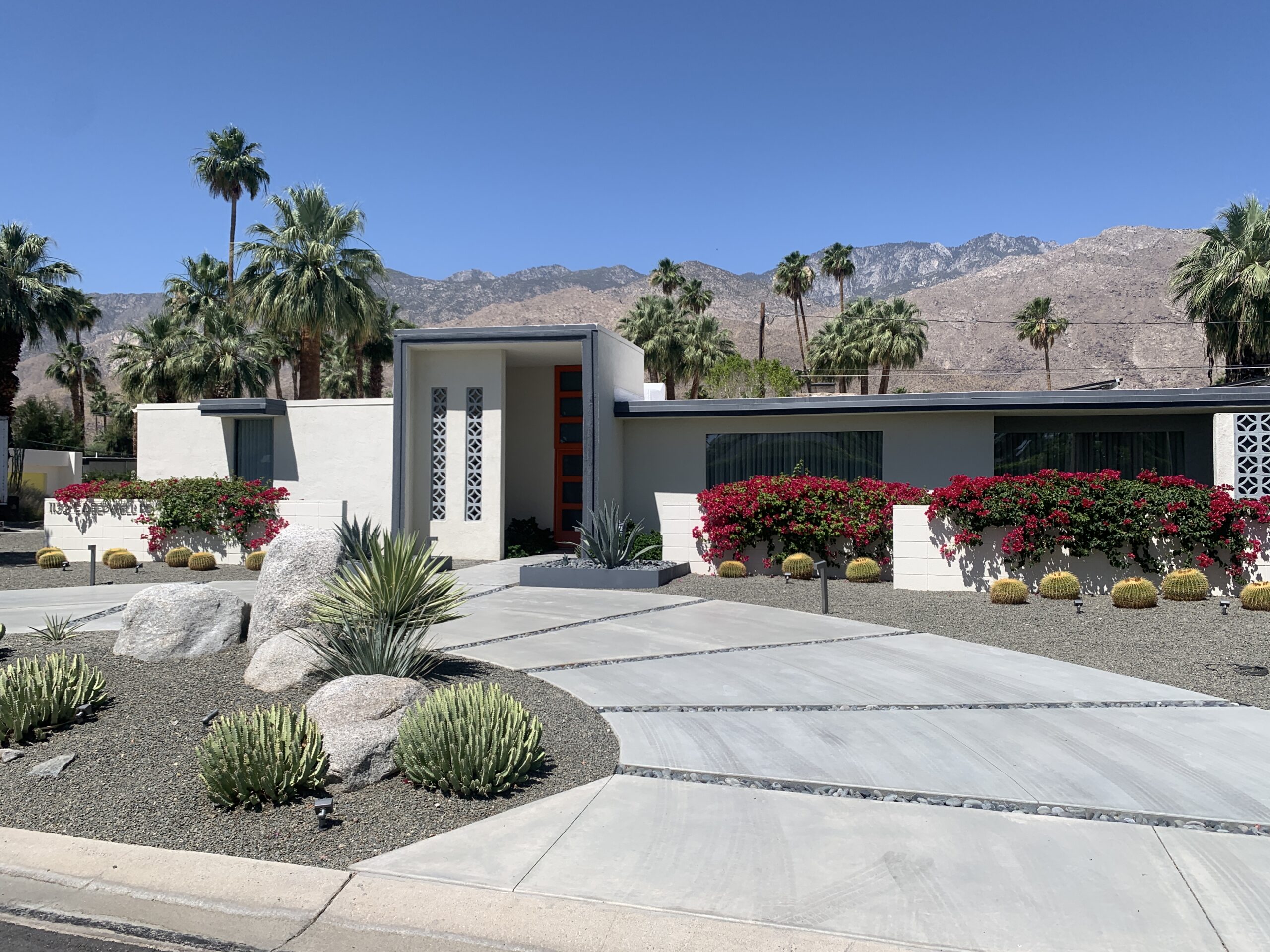

A mid-century open air museum
It started in the 1920’s when actors under studio contracts were required to be available within 2 hours of the studio in case last minute film or photo shoots were called. The quiet desert location provided a refuge from intrusive photographers and star seekers.
The original homes located in the center of the small town tended more towards Spanish style homes typical of southern California at the time. Incorporated in 1938, the Village of Palm Springs had become world-famous as a winter playground for Hollywood stars like Frank Sinatra, Marlene Dietrich, Bob Hope and Loretta Young. But it was the post-war era when the town opened up to development to provide escapes for the less rich and famous. More modest homeson smaller lots, like those above, sprung up on the valley floor, but the modern spirit prevailed.
In deference to the landscape and desire to protect privacy, the residential districts restricted homes to be single story. This allowed everyone to have unblocked views of the mountains, and assured privacy so that no one could look down into their neighbors’ pool areas. Another tenet was that homes were “discreet to the street”. Homes opened up to the back pool area, or were fenced in at the street to maintain a sense of privacy and in recognition to the desert environment. Driving through town, it’s rare to see a house that feels open to the street, few windows offering public glimpses into these getaway homes where privacy is cherished.
Since most of the homes were built as vacation homes, homeowners were more willing to take design risks and be less concerned with the practicality of a primary residence. Local and internationally known architects expressed their creativity through modern forms and new technologies that were becoming available. Their legacy continues to inspire.

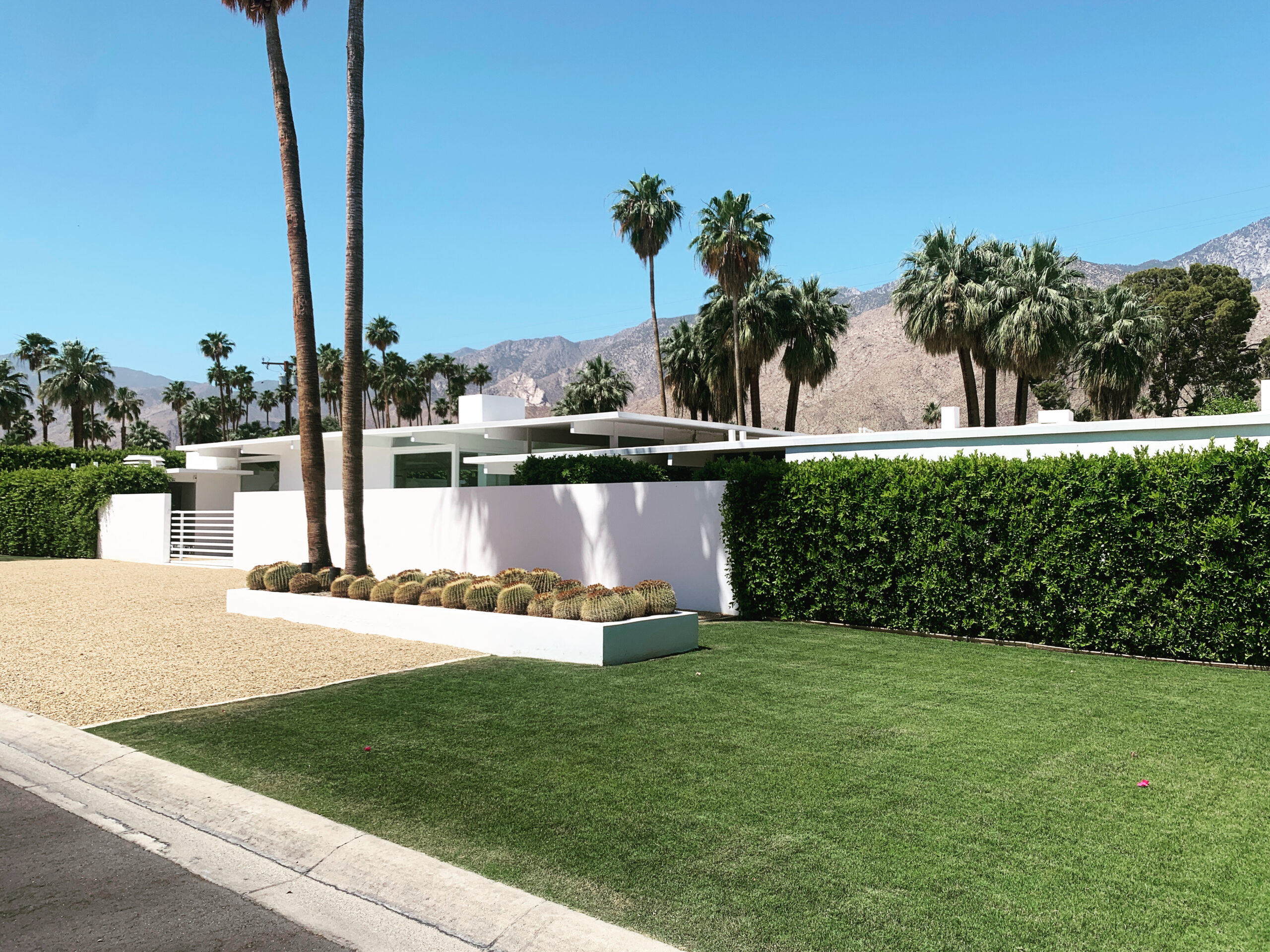
Whether in the foothills or on the valley floor, “discreet to the street” is a starting point for Palm Springs homes.
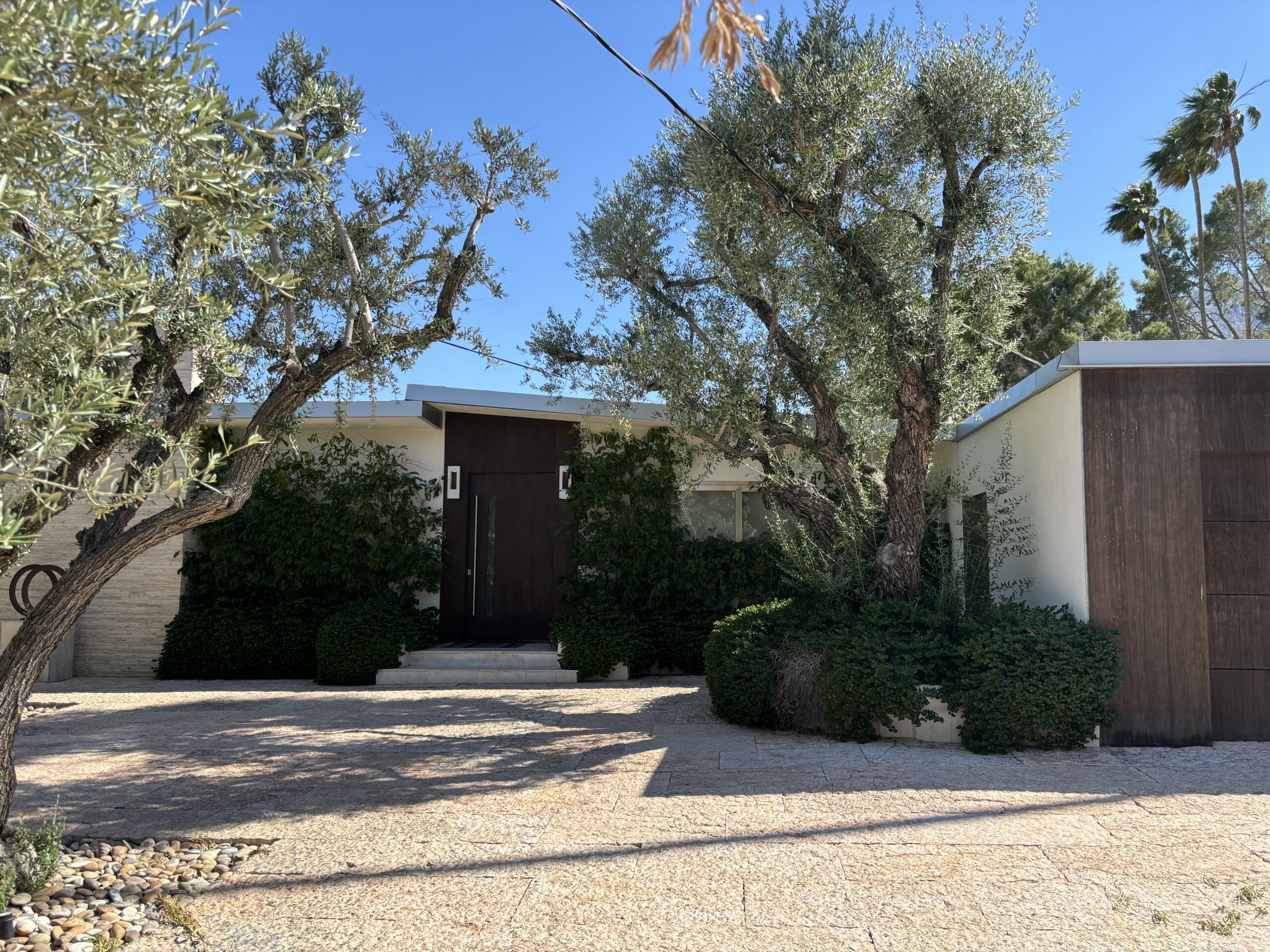
Frederick Loewe Estate
Famed Broadway composer Frederick Loewe created this classic Palm Springs modernist home on 3 acres of property with sweeping views of the mountains and valley. Completed in 1956, this luxurious property still feels like a modern sanctuary, and is used as a wedding and event venue. The view above of the front entry shows the minimal exposure to the street, with barely a hint of what is to follow upon entering the home.
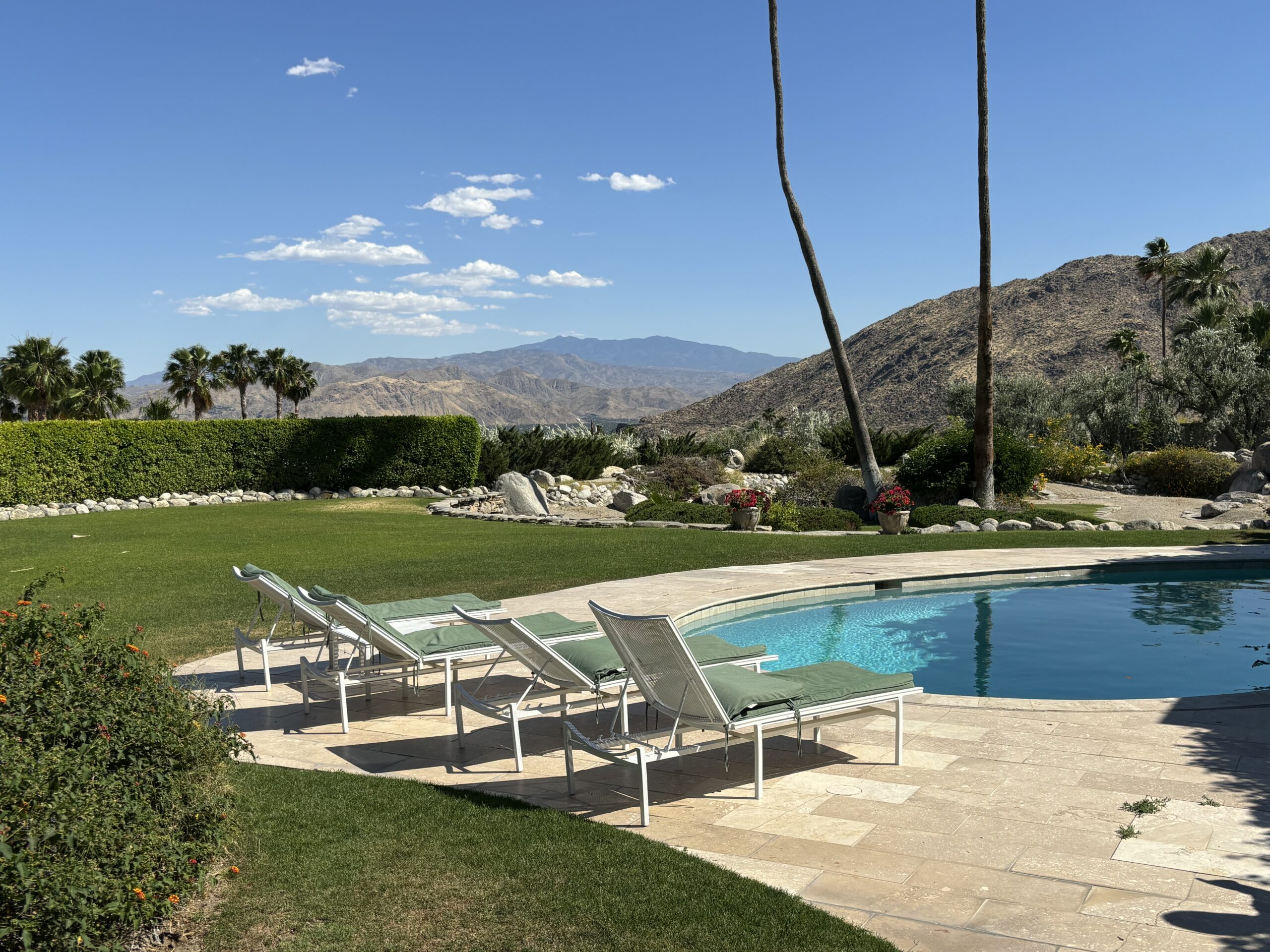
The manicured grounds around the house gives way to more naturalistic plantings that transition to the rugged mountain landscape.
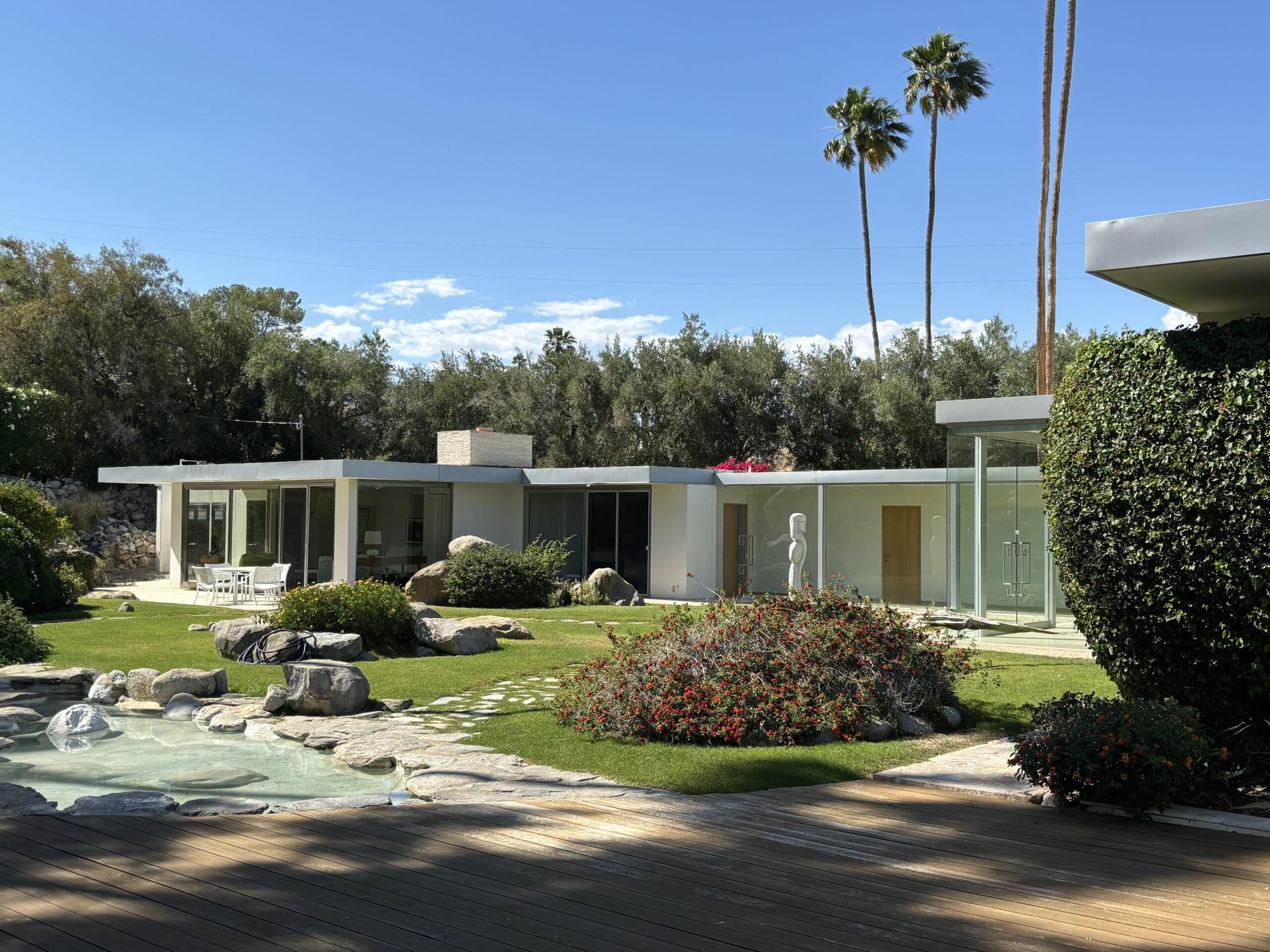
The house fully opens up away from the gaze of passersby. The elegant, low slung structure is at home in the expansiveness of the setting.

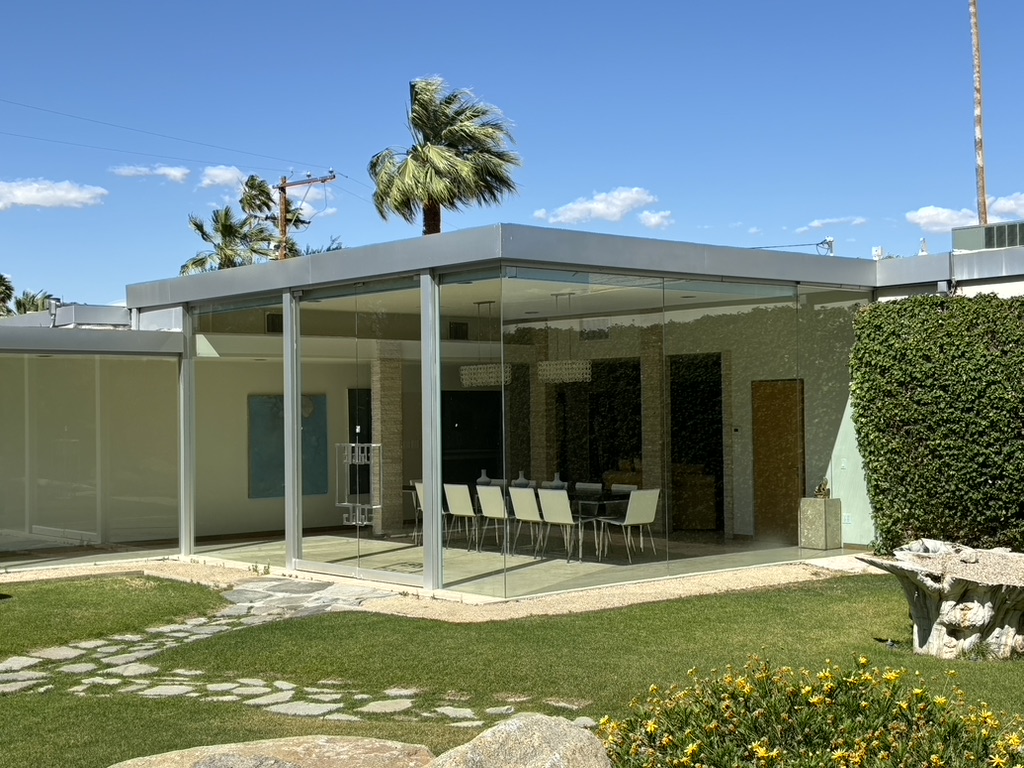
Shaded dining areas created by landscape and architecural structures.
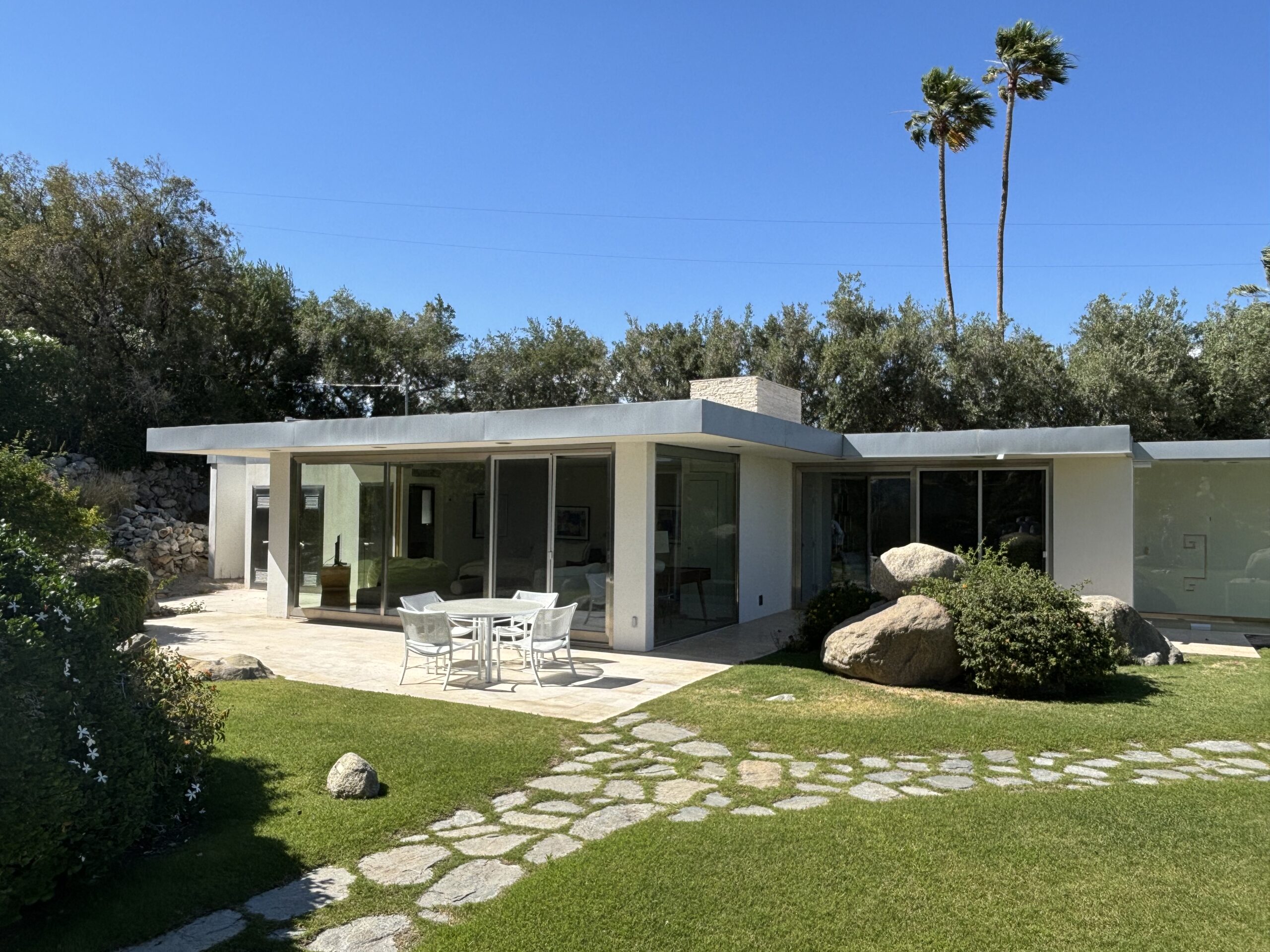
The architectural forms are strong, yet there is nothing grand or pretensious. The structure is simply expressed and provides shelter from the desert sun.
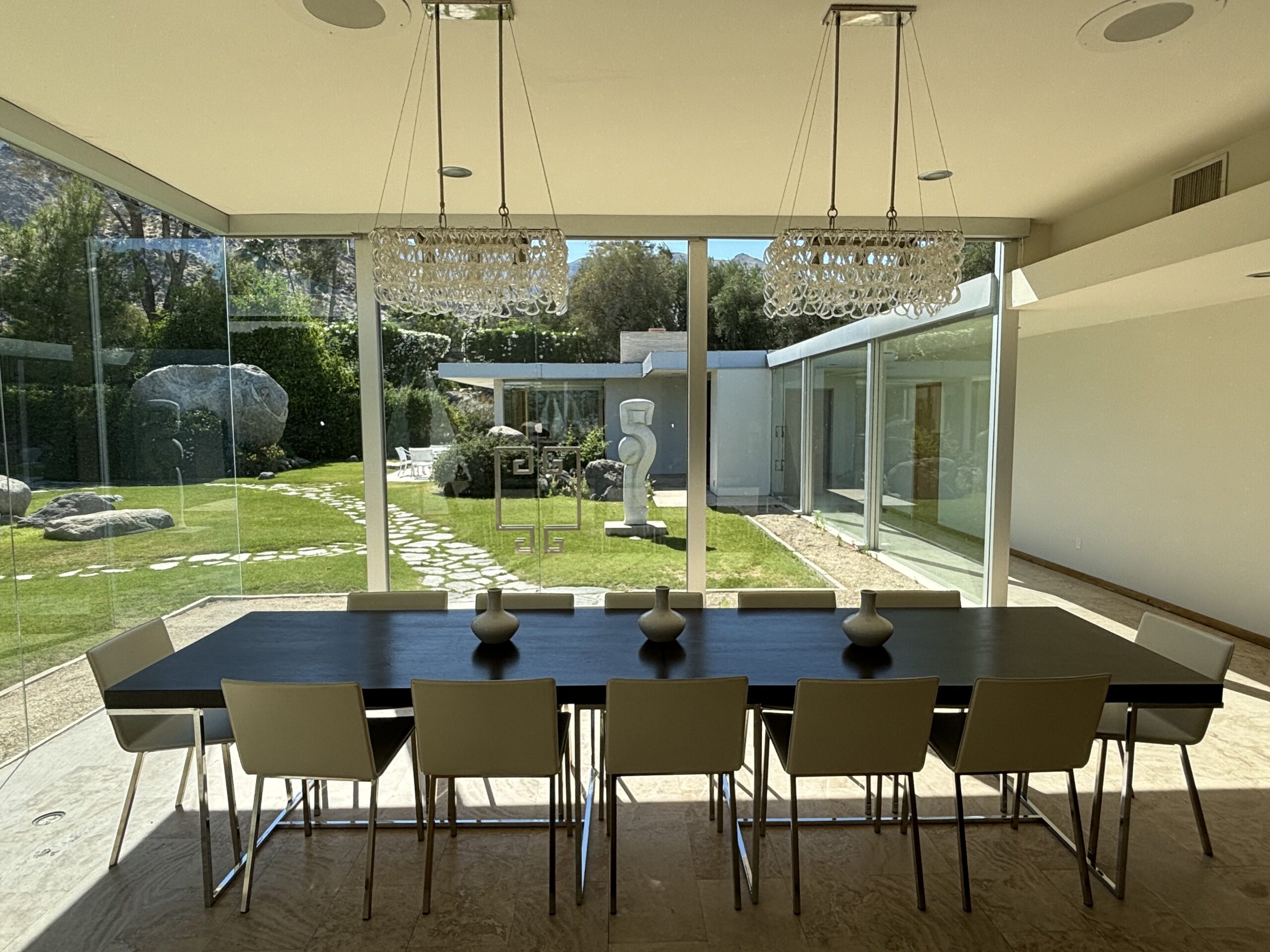
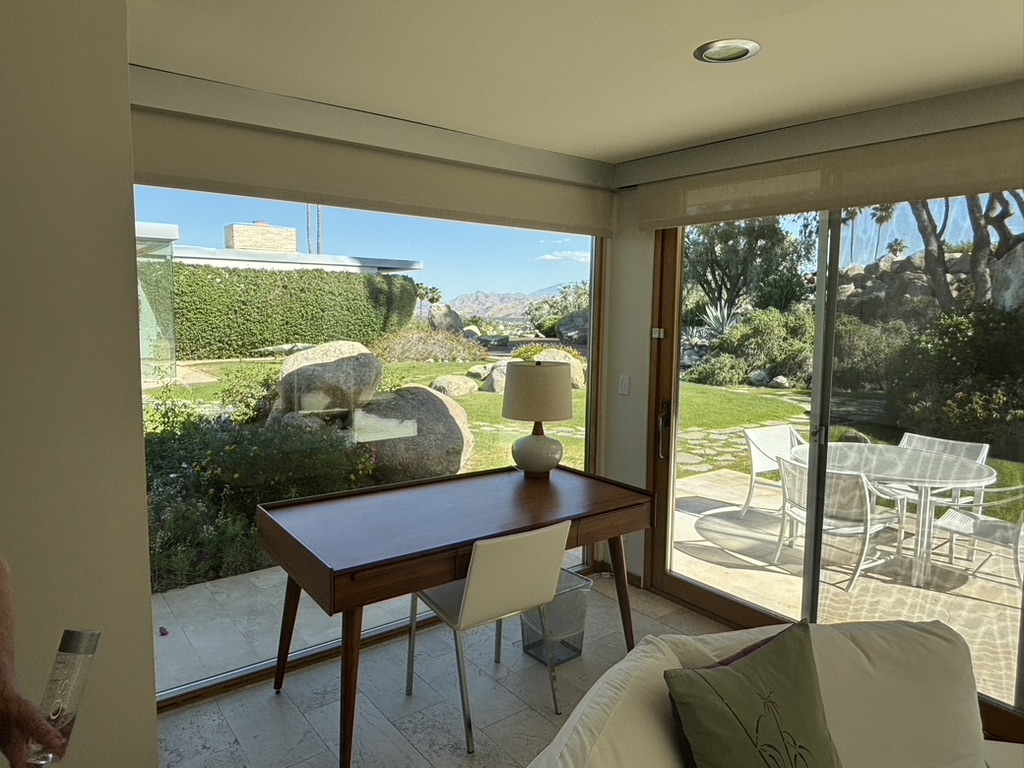
Are you inside or outside?

Floor to ceiling glass creates a seamless integration of interior and exterior. The elegance of the architecture carries to the garden and landscaping, yet the best that man can conceive is always subservient to the power of the desert mountains.
